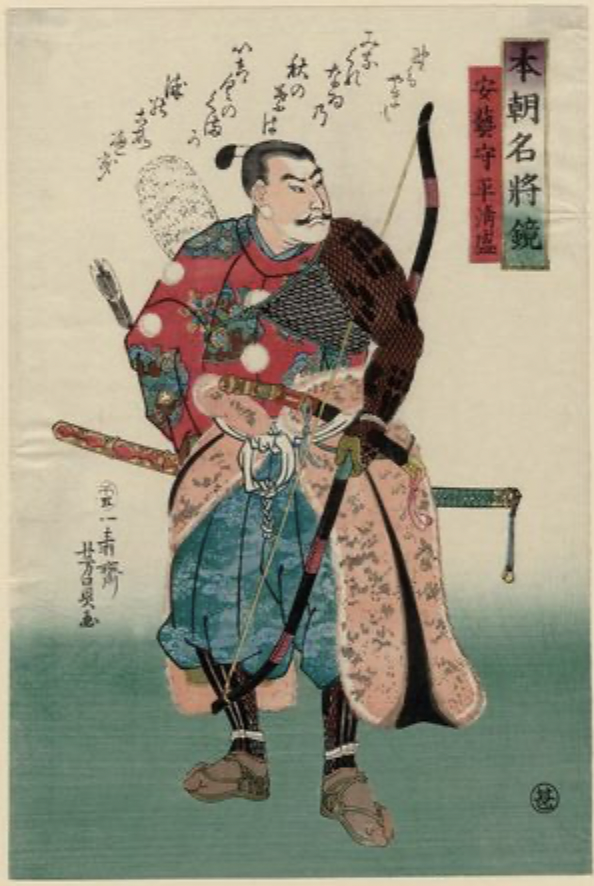
This week we continued our conversation about the emperor and the ever expanding court life. Court life got so big, in fact, that clans that were once clans of the imperial family of the emperor but lost their standing were usurped by another family. These families that were interrelated were cut off from the court life and put into smaller positions away from the court. This caused the Minamoto and the Taira clans to form. They were a conglomerate of many descendants of many different clans that once ruled or were close to the emperor. These clans became the middle man between the emperor and their aristocrats and the provincial warriors or their people. These clans got rid of problems such as bandits or unruly provinces. The courts compensated these clans by allowing any land, riches, or people they fought to be theirs to do with what they sought fit.
As such, these two clans acquired much land and began to regulate it and parallel the original bureaucracy that was in place of Japan before the court life became too distinct from the common folk. This system could have been put into place because the emperor actually did not want this system to occur but the emperor could not stop them because as we learned last week, the emperor does not have as much power as people think. This perspective on the emperor is further supported by the textbook on page 189 where it says, “the ruling oligarchy … lost the ability to control the activities of a segment of the nation’s warrior class.1” This quote further shows that the emperor did not want the Taira and Minamoto clans to gain power as they did but was powerless to stop it. On the other hand, the emperor may have also thought that he could expand his influence this way by using the Taira and Minamoto clans as an intermediary for him.
However, due to the parallels of powers held by these two clans, Taira no Kiyomori, the head of the Taira clan between 1118-1181 took it upon himself to essentially run Japan as he and the Minamoto clan had the warriors on their side2. Thus, even though Taira no Kiyomori did not call himself Shogun, he would set the precedent for all the rest. The Shogun lets the emperor rule the way he wants but the real decision and if those laws will be enforced lies in the hands of the Shogun. However, later on Taira no Kiyomori became authoritarian in his ruling which caused a rebellion to spring up, leading to the Genpei wars. The Minamoto clan won the wars and became the next Shogun, but this time using the term shogun. Nonetheless, I am quite curious why during this time the emperor did not try to consolidate his powers? Even though the Genpei wars were fought to depose Taira no Kiyomori as Shogun, the emperor is still technically the one who holds absolute power. As such, it struck me as strange that the emperor did not get rid of both clans as they were trying to usurp his power, by catching them at their weakest as they were both fighting each other. Maybe this just shows how little the emperor had influence over his country if he could not even control his people.
Bibliography
Friday, Karl. “The Dawn of the Samurai.” In Japan Emerging: Premodern History to
1850, edited by Karl F. Friday, 178-188. New York, NY: Routledge, 2018. https://muhlenberg.on.worldcat.org/oclc/787849954.
Leave a Reply